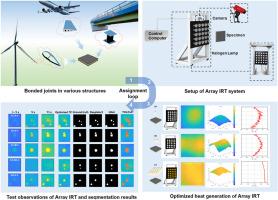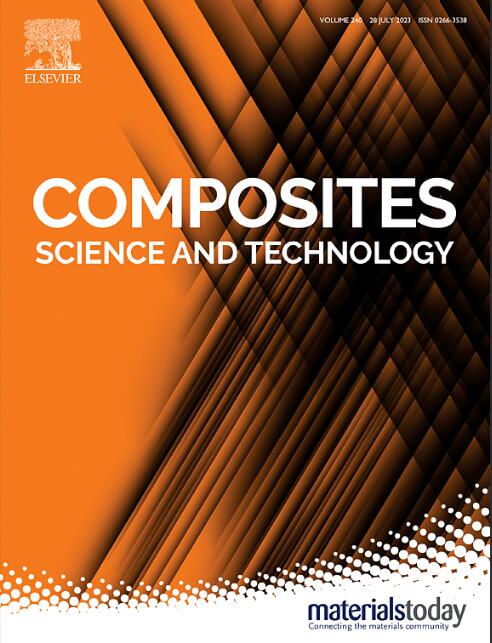阵列红外热成像技术用于观察粘接纤维增强聚合物接头中的缺陷
IF 8.3
1区 材料科学
Q1 MATERIALS SCIENCE, COMPOSITES
引用次数: 0
摘要
纤维增强聚合物(FRP)被广泛应用于新建和现有结构中,然而,粘合接头中的界面缺陷对结构完整性构成了重大威胁。因此,检测界面缺陷对于确保结构安全至关重要。本研究提出阵列红外热成像技术(IRT)作为一种新型的非破坏性评估方法来观察界面缺陷。阵列 IRT 在空间域内提供均匀的热激励,克服了传统 IRT 的热集中问题。使用阵列 IRT 测试了 45 块粘接的玻璃钢板试样,结果表明可在 (8h + 8) 秒内(h 为玻璃钢上层的厚度,单位为毫米)准确检测出界面缺陷。阵列 IRT 对形状,尤其是尖角缺陷的检测精度很高。我们提出了一种预处理方法,以消除热像仪的扭曲角度,并更清晰地显示热图中的缺陷。建立了一个数据库,其中包含测试过的热图和相应的预定义缺陷。使用 UNet、Deeplabv3 和 YOLOv8 等智能算法分割缺陷区域,进行阵列 IRT 分析,结果显示精确度分别为 95.8%、94.4% 和 94.1%。本文章由计算机程序翻译,如有差异,请以英文原文为准。

Array infrared thermography for visualization of defects in bonded fiber reinforced polymer joints
Fiber reinforced polymer (FRP) is widely used in new and existing structures, however, interfacial defects in the bonded joints pose a significant threat to structural integrity. Therefore, detection of interfacial defects is imperative for ensuring structural safety. This study proposes array infrared thermography (IRT) as a novel non-destructive evaluation method to visualize interfacial defects. Array IRT provides uniform heat excitation within the spatial domain, which overcomes the problem of heat concentration by conventional IRT. Forty-five bonded FRP plate specimens were tested using array IRT, results of which show that interfacial defects can be accurately detected within (8h + 8) s (where h is the thickness of the upper layer of FRP in mm). Array IRT achieves high accuracy in detecting shapes, particularly sharp corners of defects. A pre-processing method was proposed to eliminate the twisted angles of thermal camera and to more clearly show the defects in the thermograms. A database containing tested thermograms and the corresponding predefined defects was established. Intelligent algorithms - UNet, Deeplabv3, and YOLOv8 - were used to segment the defected regions for array IRT analysis, results of which show a precision of 95.8 %, 94.4 %, and 94.1 %, respectively.
求助全文
通过发布文献求助,成功后即可免费获取论文全文。
去求助
来源期刊

Composites Science and Technology
工程技术-材料科学:复合
CiteScore
16.20
自引率
9.90%
发文量
611
审稿时长
33 days
期刊介绍:
Composites Science and Technology publishes refereed original articles on the fundamental and applied science of engineering composites. The focus of this journal is on polymeric matrix composites with reinforcements/fillers ranging from nano- to macro-scale. CSTE encourages manuscripts reporting unique, innovative contributions to the physics, chemistry, materials science and applied mechanics aspects of advanced composites.
Besides traditional fiber reinforced composites, novel composites with significant potential for engineering applications are encouraged.
 求助内容:
求助内容: 应助结果提醒方式:
应助结果提醒方式:


